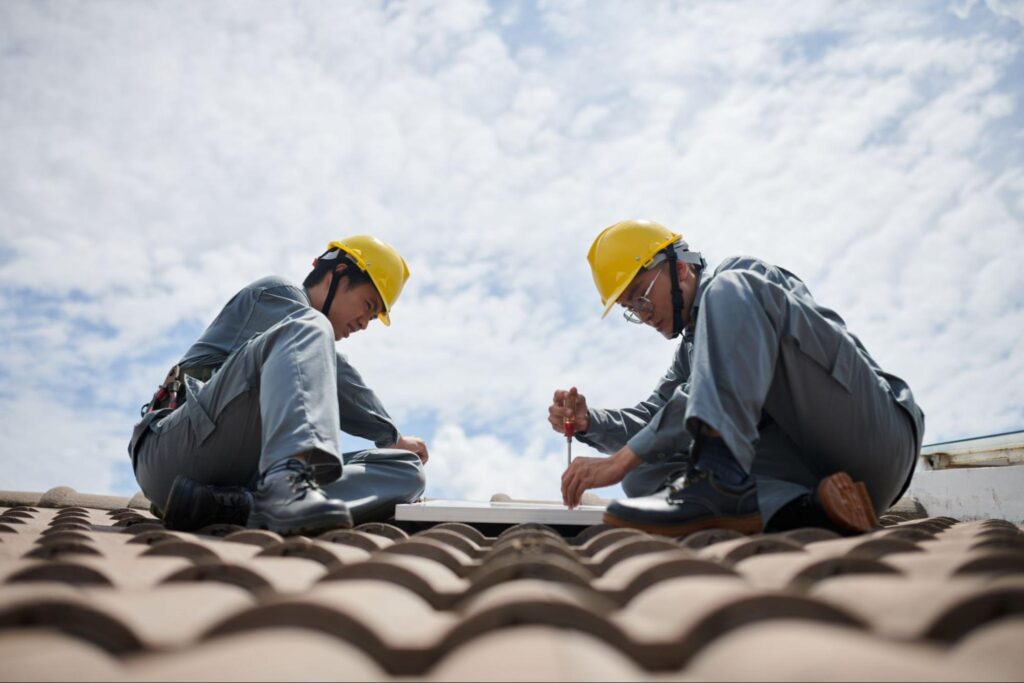A sturdy, well-maintained roof is a cornerstone of a safe home. It shields your family and belongings from the elements, ensuring comfort and security. Over time, roofs face wear and tear, leaving homeowners to decide between roof repairs or total replacements. This decision goes beyond costs, requiring careful consideration of the roof’s condition, age, and potential future problems. Making the right choice can save money, prevent more significant issues, and protect the value of your home for years to come. Common Signs That Indicate Roofing Problems Roof damage can escalate quickly if early warning signs are ignored. Identifying these signs helps homeowners decide between roof replacements and repairs. Visible and hidden indicators reveal the extent of the problem and the best course of action. Timely attention to these signs ensures the roof remains functional and safe. Cracked, Curled, or Missing Shingles Cracked, curled, or missing shingles are common indicators of wear. These signs often result from aging or weather exposure. Repairs can address individual shingles, but widespread damage might require a replacement. Neglecting these signs can lead to further complications. Interior Water Stains or Leaks Interior water stains or leaks suggest underlying issues. Water intrusion often stems from damaged flashing, shingles, or roof seams. Repairs can fix localized leaks, but extensive water damage may require replacement. Ignoring leaks risks mold growth and structural deterioration. Granule Loss on Asphalt Shingles Granule loss on asphalt shingles signals significant aging. Granules protect shingles from the sun and weather elements. Repairs may resolve small areas of granule loss, but replacements are necessary if wear is uniform across the roof. Granule accumulation in gutters is an early sign to watch for. Sagging or Uneven Rooflines Sagging or uneven rooflines point to structural issues. This problem often indicates severe water damage or compromised supports. Replacements are usually the best option for sagging roofs, as repairs alone may not be sufficient. Quickly addressing sagging prevents further damage to the home. When to Consider Roof Replacements A roof replacement is necessary for severe or widespread damage. Indicators like sagging, water damage, or aging materials suggest it’s time. Ignoring these signs can lead to more extensive damage over time. Replacing the roof at the right time prevents more significant issues later. Extensive Structural Damage When damage affects the roof’s structure, replacement is vital. Structural issues can compromise the home’s safety and stability. Replacing the roof ensures a solid foundation for years ahead and reduces future risks like water intrusion or collapse. Roof Age Beyond Its Lifespan Roof materials like asphalt shingles have a specific lifespan. Aging roofs lose their ability to protect effectively over time. Replacing the roof ensures the home stays safe and secure. Newer roofs also comply with updated building codes and standards. When Roof Repairs Are the Better Choice Roof repairs work best for minor or localized damage. They are ideal for fixing problems without replacing the entire structure. This option suits those looking to address immediate concerns. Choosing repairs can be both cost-effective and efficient. Addressing Leaks or Minor Issues Small leaks or isolated damage often only require repairs. Promptly fixing these issues prevents them from spreading further. Repairs are quick, minimizing disruptions to daily life. They also keep costs manageable for homeowners. Maintaining Newer Roofs Newer roofs typically need minor fixes rather than replacements. Repairs can efficiently address small wear-and-tear issues, helping preserve the roof’s condition for extended periods and avoiding unnecessary expenses tied to premature replacements. Types of Roof Replacement Options The choice of replacement depends on the roof’s existing structure, material preferences, and specific needs. Understanding the different replacement methods helps homeowners pick the most suitable option. Each type offers unique benefits and challenges. Full Roof Replacement A total roof replacement involves removing the old roof entirely before installing a new one. This method is ideal for roofs with severe damage, structural issues, or outdated materials. It allows for thoroughly inspecting the underlying structure, ensuring a solid foundation. While more expensive upfront, it provides the longest-lasting and most reliable solution. Additionally, this method ensures no lingering damage from old roofing materials impacts the new installation. Roof Overlay An overlay involves installing new shingles over the existing roof without removing the old materials. This method is faster and less disruptive, making it a more affordable option. It works well for structurally sound roofs with surface damage. However, overlays may not last as long as total replacements and can conceal underlying issues. Homeowners must also ensure local building codes permit this method, as some areas restrict multiple roofing layers. Cost Considerations for Roof Replacements The cost of a roof replacement depends on various factors. Homeowners should understand these cost components to plan their budgets effectively. Balancing upfront expenses with long-term benefits is critical to making a smart investment. Material Costs Materials account for a significant portion of replacement costs. Premium materials like slate or metal are more expensive but last longer. Asphalt shingles are cheaper upfront but may require replacements sooner. High-quality materials can save money in the long run by reducing maintenance needs and improving durability. Labor Costs Labor costs vary depending on the contractor’s experience and the project’s complexity. Roofs with steep pitches or intricate designs may require specialized labor, increasing costs. Experienced contractors may charge more, but they often deliver higher-quality artistry. Investing in skilled labor ensures that the job is done right the first time, reducing future repair expenses. Roof Size and Accessibility Roof size and accessibility affect total expenses. Larger roofs or those with difficult-to-reach areas require more materials and time. Homes with complex designs, such as dormers or skylights, may also increase installation time. Proper planning and accurate measurements help homeowners anticipate these additional costs. Additional Expenses Additional costs may include removing old materials, structural repairs, or upgrading insulation. Homeowners should factor in these potential expenses when planning their budget. Some projects may also require permits or inspections, which add to the overall cost. Considering these factors helps avoid surprises during the replacement process. Long-Term Benefits of…
Read More

